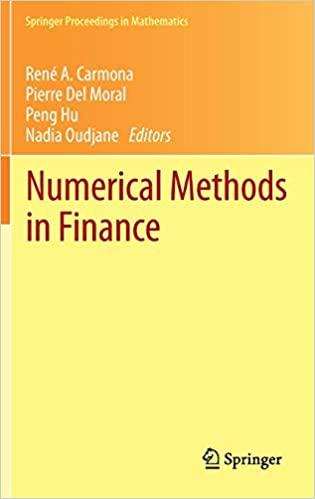Question
The arbitrage pricing theory states that the risk premium on assets in a one-factor model must be directly proportional to the asset's beta, i.e. its
The arbitrage pricing theory states that the risk premium on assets in a one-factor model must be directly proportional to the asset's beta, i.e. its sensitivity to the factor. However, you observe a situation where three well-diversified portfolios seem to violate this relation. The three portfolios (A, B, and C) have betas equal to 1, 2, and 3, respectively, and expected returns equal to 4%, 6%, and 10%, respectively. The market price of each of the portfolios is 100, and one can buy and sell multiple units of each portfolio at this price.
Which of the following portfolios represent an arbitrage?
Select one or more:
1. Short two units of portfolio B. Buy one unit of portfolio A and one unit of portfolio C.
2. Short one unit of portfolio B. Buy one unit of portfolio A and one unit of portfolio C.
3. Short one unit of portfolio A and one unit of portfolio C. Buy one unit of portfolio B.
4. Short one unit of portfolio A and one unit of portfolio C. Buy two units of portfolio B.
5. Short one unit of each portfolio
6. Buy one unit of each portfolio
Step by Step Solution
There are 3 Steps involved in it
Step: 1

Get Instant Access to Expert-Tailored Solutions
See step-by-step solutions with expert insights and AI powered tools for academic success
Step: 2

Step: 3

Ace Your Homework with AI
Get the answers you need in no time with our AI-driven, step-by-step assistance
Get Started


